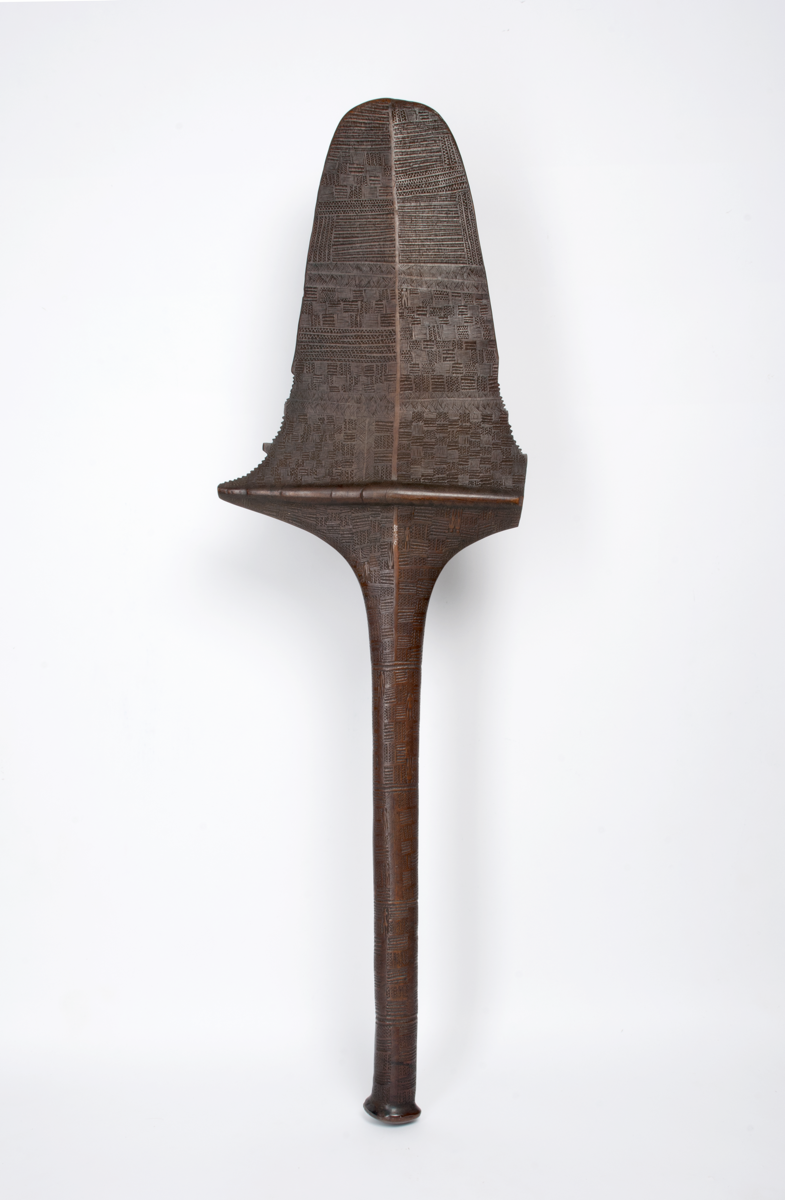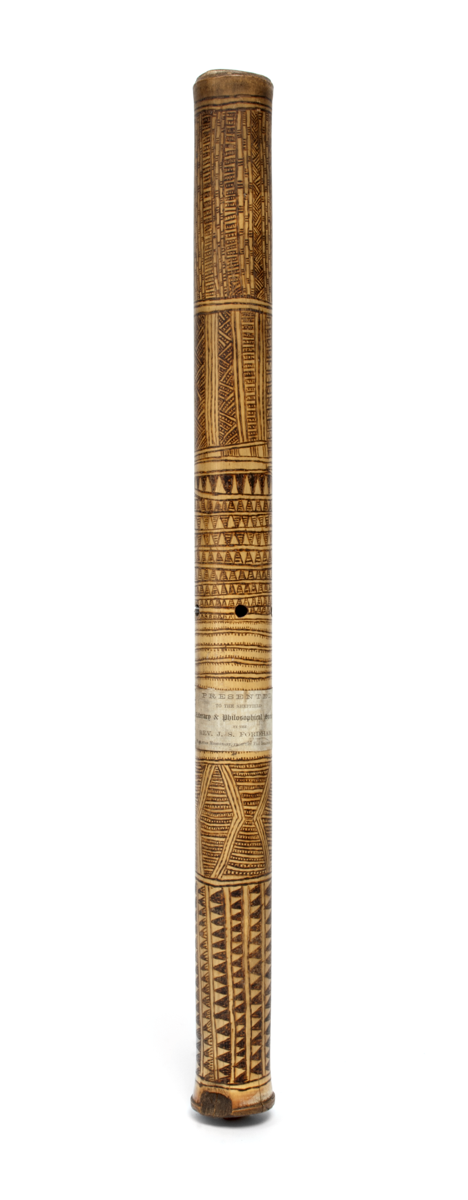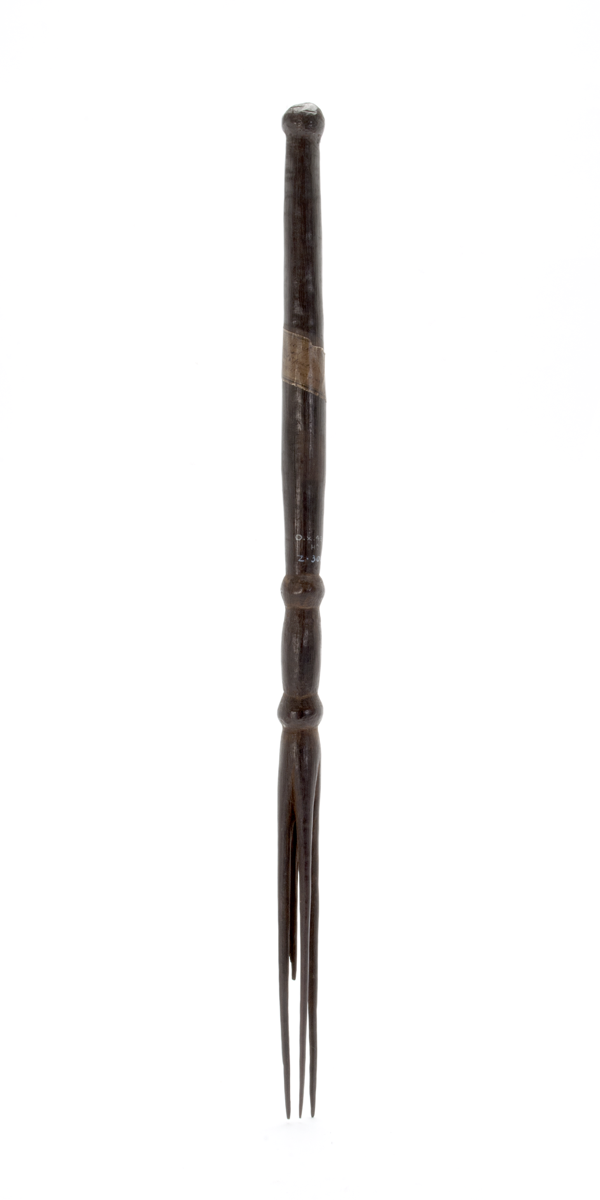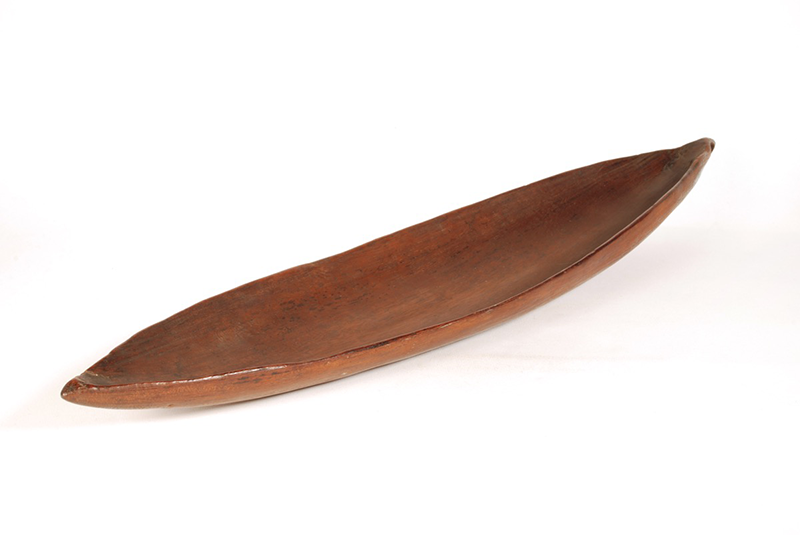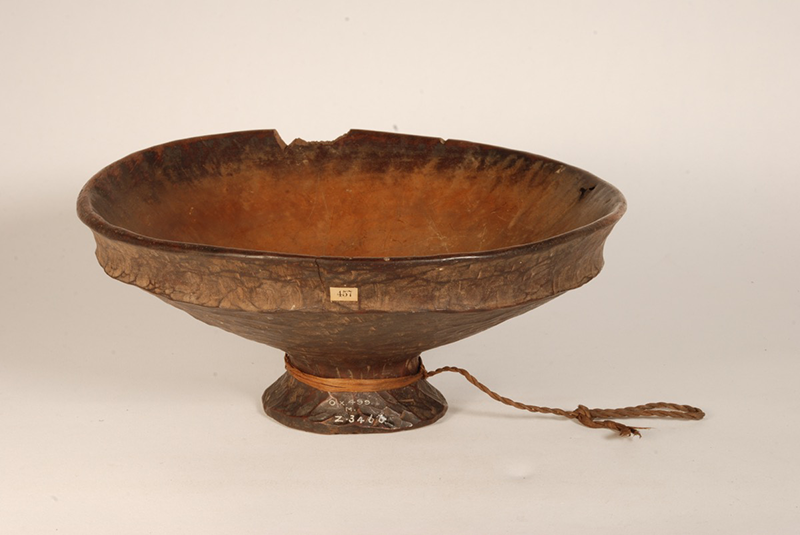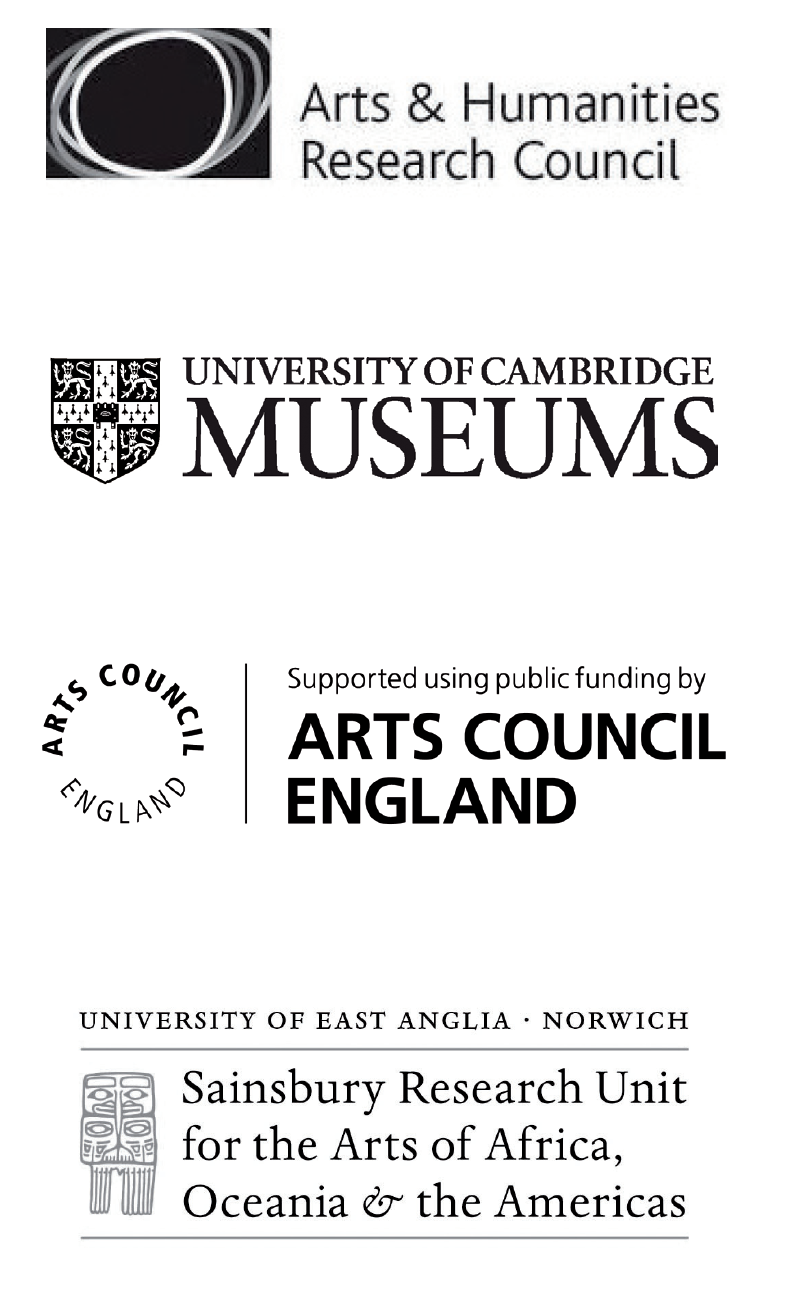In 1835 the British Methodist Missionary Society sent David Cargill and William Cross to Lakeba Island in the Lau group. Their work was supported by Tongans who had already converted to Christianity and had settled in eastern Fiji.
Missionary activity increased from the laet 1830s with the arrival of John Hunt, James Calvert and Richard Lyth with a small printing press. They established the conventions for Fijian writing and translated the Scriptures.
Missionary accounts provide detailed information about Fijian history and culture. Their work was gradually extended through strategic alliances with powerful chiefs. They developed the soli, a Christian form of solevu to attract donations. Despite the efforts of other Christian groups, Methodism remains the main denomination in Fiji.
Use the drop down menu below to explore the objects in this section.
This heavy paddle-club is entirely carved with very fine Fijian-style geometric patterns and a number of single, paired and mirrored anthropomorphic figures. Very elongated, they differ from the Tongan-style figures found on some Western Polynesian weapons. The two gendered figures carved on the shaft, clearly a man and a woman, are extremely unusual features in Fijian art.
Fiji. Collected by Rev. J. Waterhouse, 1850s. 1932.680
The presence of missionaries at the heart of Fijian communities gave them a privileged position to collect and be presented with objects. Their impact on both Fijian culture and religion was immense, and their translation of the Bible into Fijian set the rules of current Fijian orthography.
Nose flute, Bituucu
Flute of bamboo decorated with very fine geometrical patterns in pokerwork.
Fiji. Collected by Rev. J. S. Fordham, 1850s-1860s. Z 2900
Flesh fork
Four-pronged flesh fork of wood. The last owner of this fork was a chief and priest from the Ba area named Vutovutowaqa.
Ba, Viti Levu, Fiji. Collected by Rev. R. B. Lyth, 1839-54. Z 3000
Mary-Ann Lyth's sketchbook
This sketchbook contains pencil as well as pen and ink drawings of Fijian flora and artefacts. This drawing captures the high status of a Bauan woman through her posture and accoutrements.
Fiji. Sketch by M.-A. Lyth, 1839-54. Private collection
Bible
Fijian Bible, Ai vola ni Veiyalayalati Vou i Jisu Karisito, given to Jioje Akusito Fereterika Wiliami Boukalaki in Levuka on 4 April 1874. Corrections in pencil are visible in the text.
London. Published in 1870. Private collection
One of the innovations introduced by the missionaries was the soli, a Christian form of solevu, to attract donations for mission work. Presenting objects to missionaries was effectively a way of presenting objects to God. This followed a pattern established by Fijians in their previous religious practices where presentation of valuables was necessary to obtain the blessing or the protection of a deity.
Food dish
Elongated leaf-shaped food dish. This type of dish would have been used to present food on important occasions.
Fiji. Collected by Rev. J. Calvert, 1839-55. 1964.159
Bowl or cup
The unusual shape of this bowl with its carinated walls may have been inspired by Christian vessels such as chalices and ciboria. The surface of the wood is carved as if to imitate hammered metal, a feature rarely seen in Fijian woodwork.
Fiji. Collected by A. Maudslay, 1875-80. Z 3466


